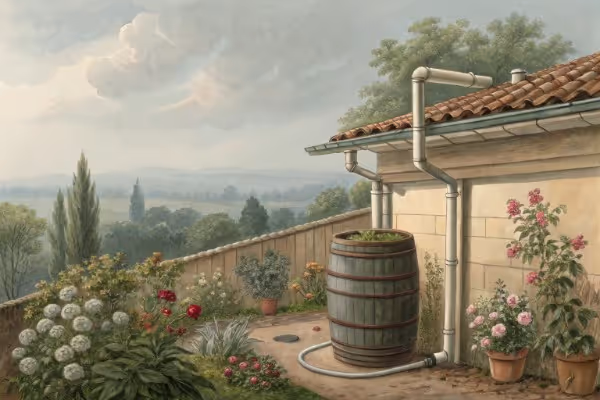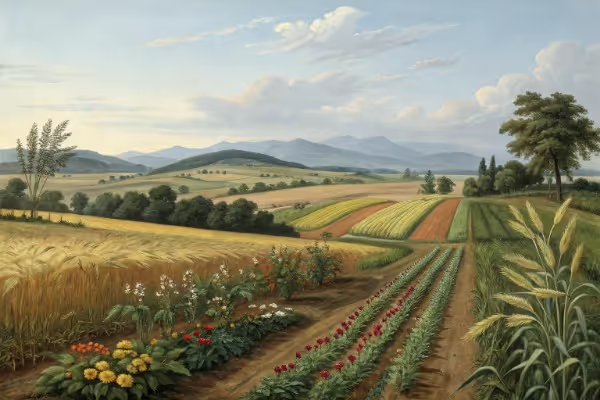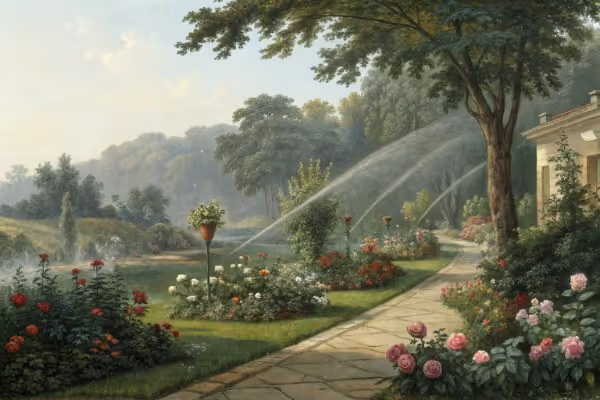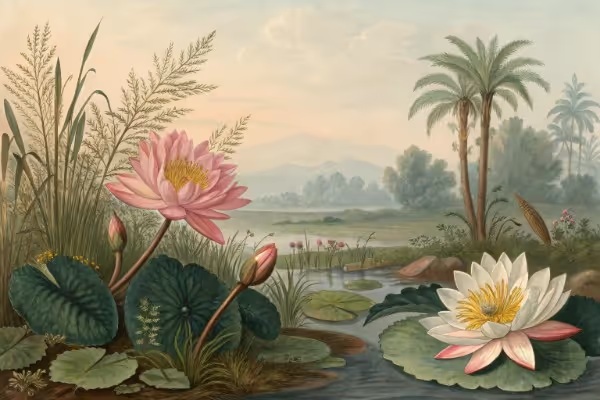Best Pots for Tomatoes to Grow Healthy, Productive Plants
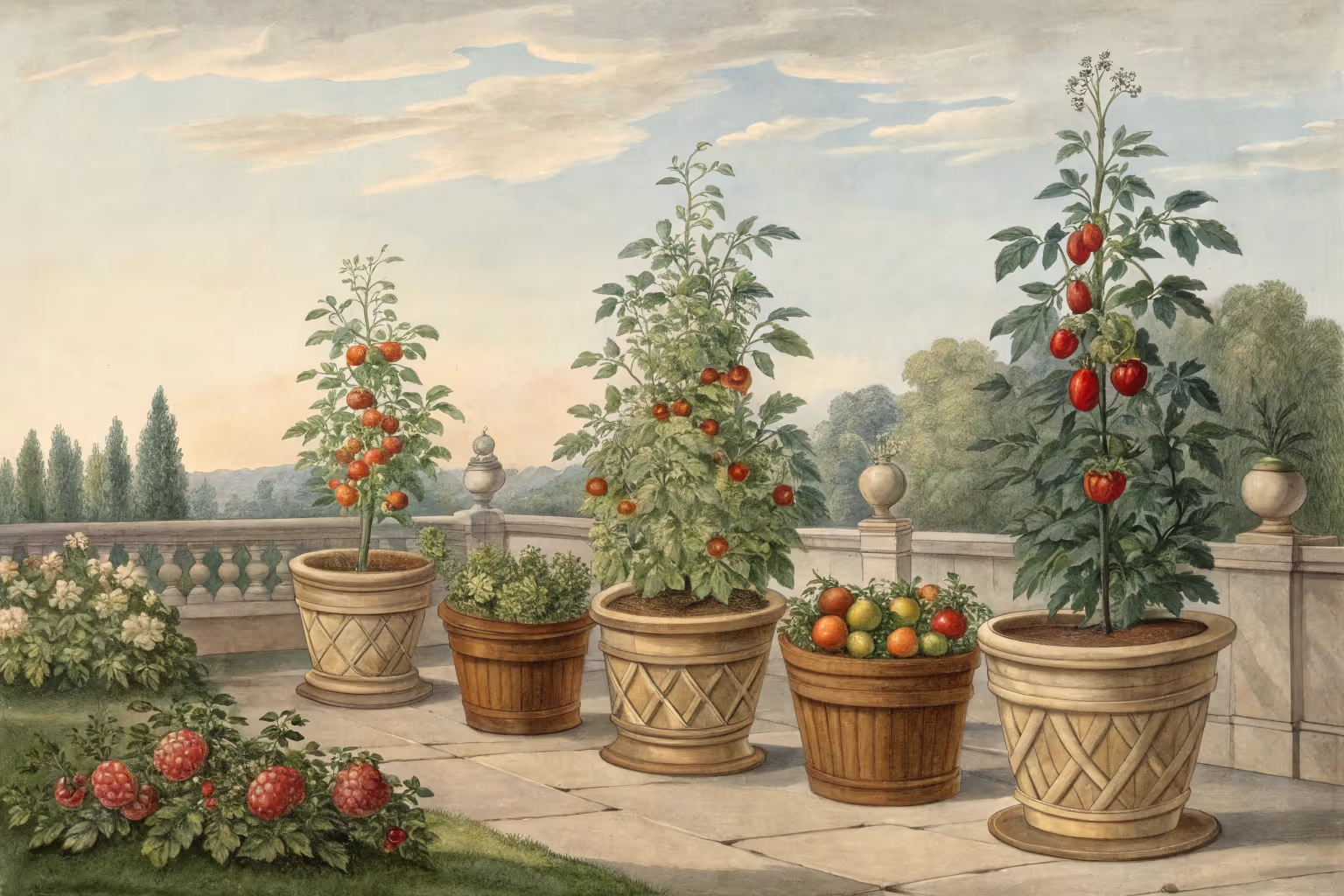
best pots for tomatoes
Choosing the best pots for tomatoes directly shapes your plant's health, growth, and harvest. Tomatoes thrive in pots at least 18 inches in diameter with ample drainage and sturdy materials like ceramic or durable plastics. Stick around, and we'll cover which containers deliver flavorful tomatoes season after season.
Cheatsheet: Tomato Pots for Maximum Yields
🪴 Pot Size & Depth
- Minimum size: 5 gallons (19 liters) per plant.
- Indeterminate types: 10+ gallons (38+ liters).
- Depth: 12–18 in / 30–45 cm.
- Shallow pots stunt roots, slash yields by 40%.
🌧️ Drainage & Material
- Drainage holes essential—prevents root rot.
- Terra cotta: Breathable, dries quickly.
- Plastic: Retains moisture, lighter.
- Fabric grow bags: Air-prune roots, double growth rates.
- Self-watering pots: Prevent summer wilt.
🌡️ Placement & Mobility
- Full sun: 6–8+ hrs daily for high lycopene (antioxidant).
- Wheels or handles aid heat avoidance (move at 86°F/30°C+).
🌱 Soil & Care
- Mix: 60% potting soil, 20% compost, 20% perlite.
- Add calcium to prevent blossom-end rot.
- Mulch to cut watering by 50%.
🛠️ Tools and Products You'll Need
- 5–10 gal (19–38L) pots or grow bags
- Premium potting mix
- Compost
- Perlite or vermiculite
- Organic fertilizer
- Tomato cages or stakes
- Trowel
- Watering can
- Mulch
🍅 How To Grow Tomatoes in Pots
- Pick a 5+ gal (19L) pot with drain holes.
- Fill with quality soil mix; add compost and perlite.
- Plant tomato deep—bury 2/3 of the stem.
- Water until moist but not soggy.
- Stake or cage for support.
- Place in sunniest spot available.
- Top up with mulch; water consistently.
- Feed every 2 weeks with fertilizer.
🍴 Nutritional Perks & Self-Sufficiency
- Homegrown tomatoes: 2x more vitamin C than store-bought.
- Boost food security, reduce pesticide exposure.
Finding the Perfect Home for Tomato Plants
I learned to grow tomatoes from my grandmother, whose lush rooftop garden overflowed with juicy heirlooms every summer. Her secret: she always chose the best pots for tomatoes carefully.
Here's why the right container matters and how you can choose yours.
Essential Traits of Tomato-Friendly Pots
Tomatoes like space. Their roots dig deep and wide, stretching out to absorb nutrients, oxygen, and water.
My own experiments growing tomatoes taught me to look for pots at least 18-24 inches (45-60 cm) wide and deep. Smaller containers stunt growth and disappoint at harvest time.
Material Matters: Ceramic, Plastic, or Fabric?
Material choice impacts how often you water and how hot your tomatoes get on sunny afternoons.
- Ceramic and terracotta: Beautifully porous, allowing roots to breathe. However, they dry out quickly, especially when temperatures rise above 85°F (29°C).
- Plastic: Retains moisture longer, but sunlight heats up dark-colored plastic relentlessly. Try lighter colors or double-layered pots to keep roots cool.
- Fabric grow bags: Air pruning keeps roots healthy, and portability is a bonus. I love fabric bags for mobility, especially during unpredictable weather.
Personally, I'm partial to fabric grow bags. They're affordable, lightweight, and my tomatoes seem noticeably happier.
Drainage: The Unsung Hero
No tomato plant appreciates standing in stagnant water. Choose containers with multiple, well-sized drainage holes.
If using ceramic or terracotta pots, I often line the bottom with broken pottery shards or gravel, ensuring proper drainage and protecting roots from rot.
Tomatoes in poorly drained pots can suffer root rot in as little as two rainy days. Drainage makes the difference between fragrant plants and foul-smelling mush.
Supporting Your Tomatoes
Tomatoes need support as they grow fruit-heavy branches. Choose pots sturdy enough to anchor a cage, stakes, or trellis.
Light plastic containers topple with the first gust of wind, destroying weeks of gardening effort—trust me, I've shed tears over spilled tomatoes.
Color Counts
Pot color isn't purely aesthetic; it affects the temperature of your plant's roots. Lighter-colored pots reflect sunlight, keeping roots cooler and happier.
I tested this myself by placing identical plants in black and white pots side-by-side. The difference was striking: white-potted tomatoes thrived while black-potted siblings wilted midday.
My Tried-and-True Picks—Summed Up
To help guide your choice, here's my short-and-sweet list of the best pots for tomatoes:
- Fabric Grow Bags (15-20 gallons, 57-76 liters): Affordable, mobile, breathable.
- Large Ceramic Pots: Aesthetically pleasing, porous, but heavy—perfect for a permanent garden spot.
- Light-Colored Plastic Containers (minimum 18 inches / 45 cm diameter): Great moisture retention, budget-friendly, but choose wisely for longevity.
Your tomatoes deserve a proper home. Choose pots thoughtfully, considering size, material, drainage, and support, and you'll harvest mouth-watering tomatoes—as delicious as my grandmother's heirlooms.
Frequently Asked Questions about Choosing Pots for Tomatoes
What size pot gives tomato roots enough room to grow?
Choose pots with a minimum diameter and depth of 18 inches (45 cm) to provide ample space for tomato roots. Larger varieties thrive best in containers at least 24 inches (60 cm) deep, ensuring strong root development and healthier plants.
Which materials create optimal growing conditions for tomato plants?
Clay and ceramic pots allow effective airflow and moisture evaporation, reducing the risk of root rot. Fabric grow bags provide excellent drainage and aeration. Plastic pots retain moisture efficiently but require adequate drainage holes to prevent waterlogging.
Should I select dark-colored or light-colored pots for growing tomatoes?
In hot climates, light-colored containers reflect sunlight and prevent soil overheating. Cooler areas benefit from darker pots, absorbing warmth and maintaining favorable soil temperatures around 65–85°F (18–29°C) for healthy tomato growth.
Do tomato plants require drainage holes in containers?
Yes. Containers should have multiple drainage holes at the bottom to eliminate excess water, preventing root rot and fungal diseases. Consider adding a layer of gravel or broken pottery shards at the base to ensure reliable drainage.
How often should tomato plants in containers be watered?
Container-grown tomatoes usually require watering every 1–2 days, depending on local weather conditions. Keep soil consistently moist but never soggy, watering slowly until excess water flows from drainage holes.
Which container shapes support better tomato plant stability?
Cylindrical and wide-based pots provide superior stability, preventing toppling during strong winds or heavy growth periods. Wider pots distribute weight evenly, supporting sturdy stems and robust fruit production.
Can multiple tomato plants share a single large container?
Large containers at least 24–30 inches (60–75 cm) in diameter can accommodate two tomato plants comfortably. Ensure adequate spacing between plants (approximately 12–18 inches (30–45 cm)) to prevent overcrowding, facilitate airflow, and reduce disease potential.
There’s no shortcut—healthy tomatoes demand the right pot. Choose large containers with solid drainage, and skip the urge to crowd your plants. Invest in quality soil, stay consistent with watering, and you’ll see the payoff in flavor and yield. If you want to push things further, pair your best pots for tomatoes with companion plants or try trellising for support. Remember, tomatoes will only give what you give them—so don’t skimp. The right pot is the first step toward a summer’s worth of unbeatable harvests.
The Homesteader's Guide to Tomato Pots: Self-Sufficient Growing Practices
Repurposed Containers for Resourceful Growing
- Food-grade buckets: Drill drainage holes at base and clean thoroughly with vinegar-water mix (1:3 ratio) before planting.
- Wooden crates: Line interiors with burlap fabric to retain soil while promoting airflow.
- Old galvanized tubs: Confirm metal is zinc-coated; drill drainage holes and fill bottom with gravel for proper drainage.
Natural Soil-Building Strategies for Enhanced Harvests
- Layer pot bottom with broken eggshells or oyster shells for slow-release calcium to prevent blossom-end rot.
- Integrate composted kitchen scraps weekly: coffee grounds add nitrogen, banana peels supply potassium.
- Mulch surface lightly with dried grass clippings or straw to regulate moisture and enrich soil nutrients naturally.
Sustainable Water-Saving Techniques
- Insert buried clay 'olla' irrigation pots within larger containers to sustain steady moisture by absorbing water through porous clay walls.
- Apply thick mulch layers (4–6 inches / 10–15 cm) to reduce heat evaporation and watering frequency.
- Collect rainwater in food-safe barrels to irrigate container tomatoes, conserving resources and promoting self-sufficiency.
Boost Nutritional Content Through Container Selection
Using breathable materials such as terracotta or fabric grow-bags encourages robust root structure, boosting nutrient uptake and increasing tomato fruit antioxidants, particularly lycopene, which supports heart health and boosts immunity.
Temperature Management for Optimal Yield
- Arrange pots strategically: morning sun exposure and afternoon shade maintain soil temperatures between 65–85°F (18–29°C), ideal for tomato plant health and productivity.
- Position pots on wheeled carts or platforms to relocate plants easily during extreme heat, frost or inclement weather.
Find out which plants will thrive in your garden!
Answer a few fun questions and get custom plant recommendations perfect for your space. Let’s grow something amazing together!

start your season
